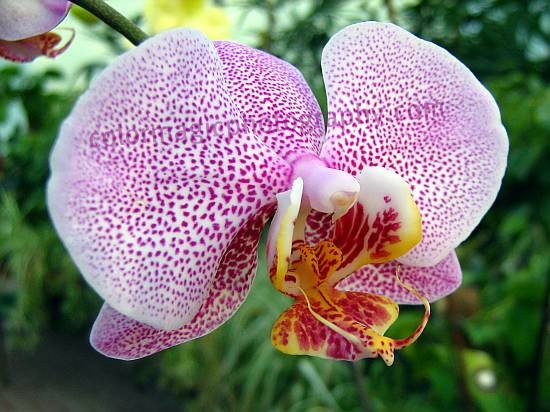MahvishNagda-Project 3 Proposal
For the Generative Art portion of the course, I had 2 project ideas that I was interested in working on. Realistically, given the time frame I’m thinking that the first one might be better.
Modelling orchid (or flower) petal (pigmentation) patterns.
This project idea is mainly inspired from work done by nervous system (link). I initially wanted to work on a project with some sort of 3d printing portion, just so I would get experience working on a project like that. I doubt I’ll be able to get to that. I also wanted to simulate something in nature. The generative portion could be different petals based on the algorithm. Also different petals have different patterns so one possibility is to have a combination of those in some way that evokes the same balance.
Some background research showed that flower pigmentation patterns have been simulated using reaction diffusion algorithms (so toxiclib’s simutils comes in handy here). However, just looking at an orchid you’ll notice a leaf/venation pattern, so my algorithm is likely to be a mix of these.


Although mapping these petal patterns on an actual orchid could be pretty, it seems pretty hard to do that mapping + color scheme. So I’m thinking of looking at 1 petal for now and then maybe applying it to something else: like jewelry/etc (I haven’t figured this part out yet).
The toxiclibs’ simutils library will be helpful.
Some more links about the biology of the patterns (for completeness):
Molecular bases of pigmentation in flowers
Some more on venation pigmentation patterns in the SnapDragon
Sacred Tiling & QuasiCrystals.

This was something I really wanted to work on but my idea is still quite unformed and I haven’t found a good library that I can leverage. The idea was to use Arabic tiling patterns that are well established and use that for some generative form. I grew up in the Middle East so saw these beautiful patterns everywhere. I also think there is potential for something generative in the mathematics behind these patterns. For example, they’ve been used to explain how quasicrystals could form (link to a good article & link to 2011’s Nobel Prize on the topic). Quasicrystals & these tiles are aperiodic: so they follow mathematical tiling rules but don’t repeat the same pattern over and over. They have also been mapped to Penrose tiles (so maybe something like this could be interesting).
Some potentially relevant links:
Symmetric Chaos
Space Filling in Penrose Tiles & Fractals
Penrose Tile Gallery
Tile Patterns
So right now this is an interesting tangent and I’m not sure where this would go. I find this interesting but I think this is definitely not something that can be done in this timeframe and I don’t see it being generative as it is. The tile patterns seem not random enough? But I am interested in libraries that could help or discussions.